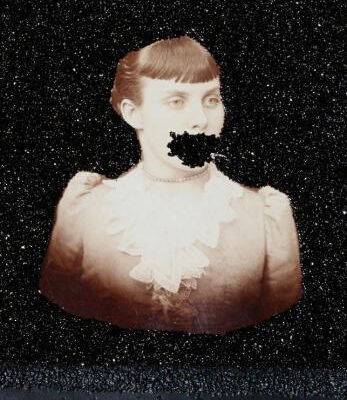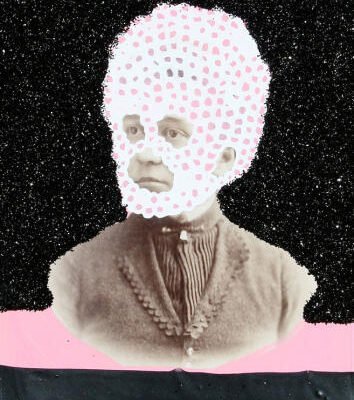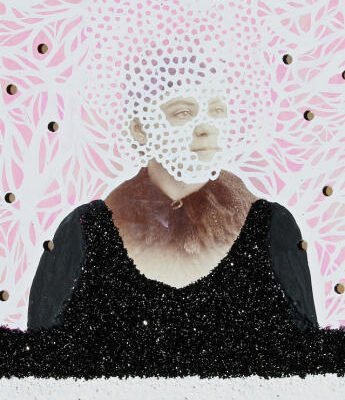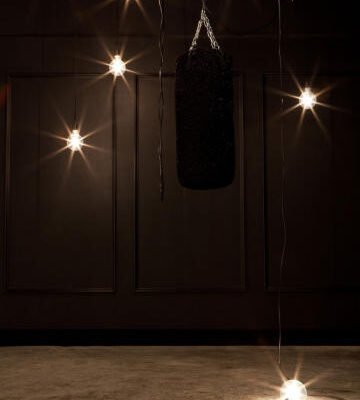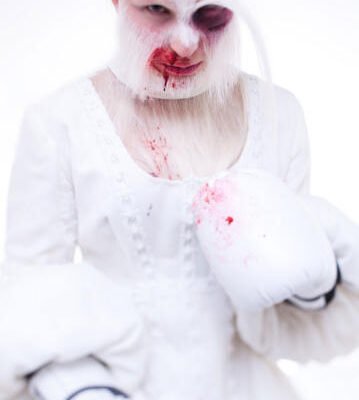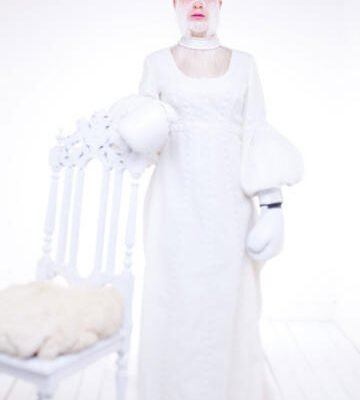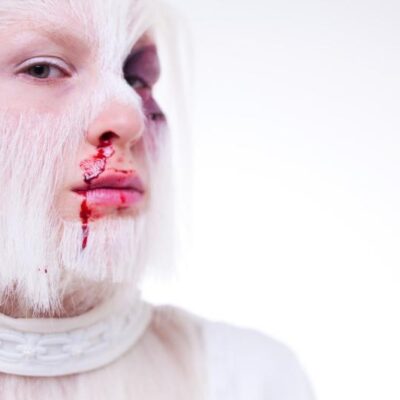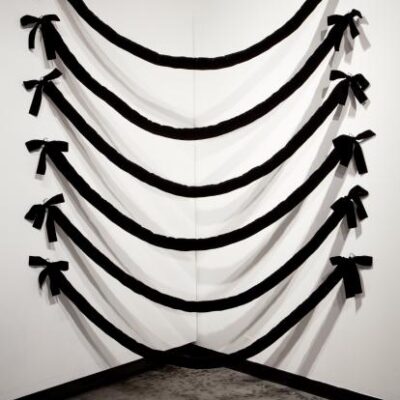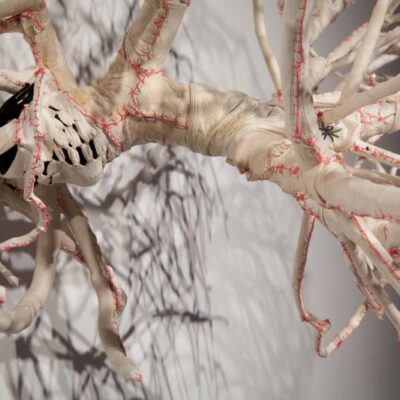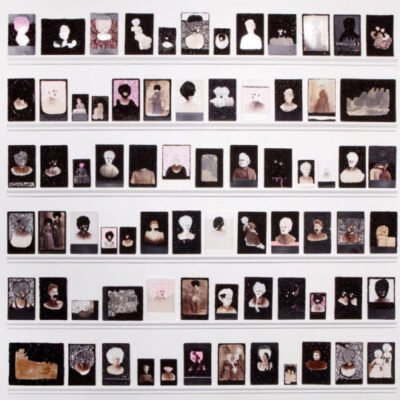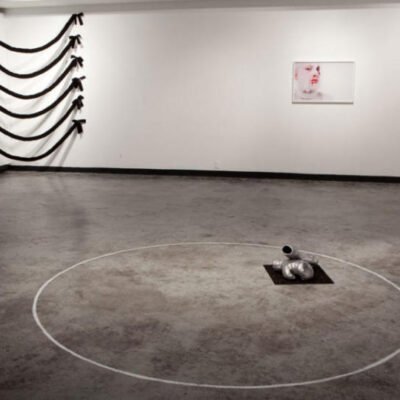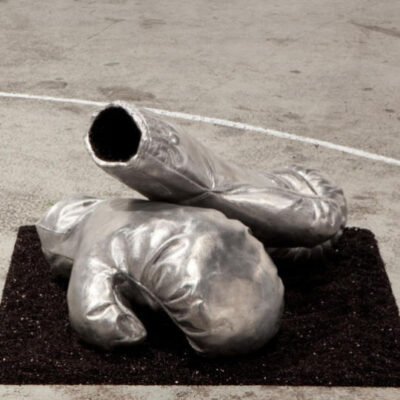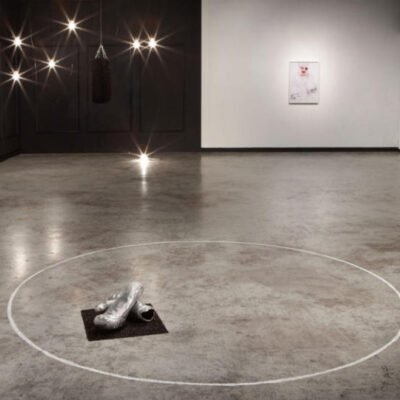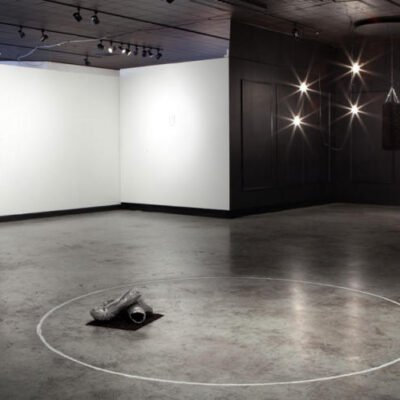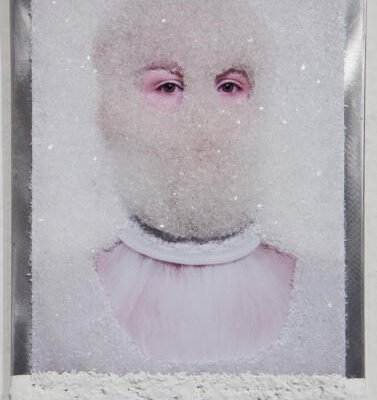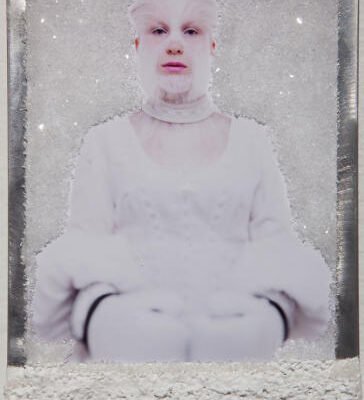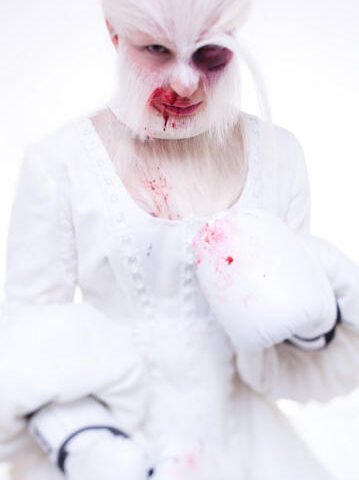

Margaret Meehan
With images of Victoriana, pugilism, medical anomalies and barren landscapes, Hystrionics and the Forgotten Armproposes a choreographed fight outside the circled square. Margaret Meehan’s drawings, photographs and sculpture-based installations let innocence collide with the monstrous, evoking race, gender, and empathy for otherness.
Interested in teratology, the study of real and mythical monsters, Meehan combines the man made with the freak of nature. The exhibition includes seemingly disparate things: Circassian Women, hypertrichosis (a condition also known as werewolf syndrome) and the history of Boxing, a sport that legitimizes our need to fight, using others to sublimate our own desires.
The Circassian beauties depicted in Meehan’s drawings refer to women of the northern Caucuses who had a reputation in the Ottoman Empire as the most desirable of the Sultan’s harem. At the turn of the century PT Barnum began exhibiting Moss Haired Girls that he claimed were genuine Circassians, as a sideshow attraction. With large Afros and exotic costumes they were self-made freaks in charge of their own agency.
Histrionics was a term used in the late 19th and early 20th centuries to refer to a seductive overabundance of emotion. It was most commonly ascribed to women whom, it was believed, were more prone to fits of excessive feeling. Both Circassian women and those with werewolf syndrome offer images of another kind of excess – not of emotion but of hair. Hair has a long relationship to sexuality but hair also covers the body. Representing two separate and competing ideas, it is about both excess and restraint.
Boxing has similar dualities. Each boxer mirrors the other so that their opponent becomes a reflection of themselves. While pugilism appears to be about horrific aggression it actually is a calculated sport, as noted by such writers as Norman Mailer and Joyce Carol Oates, where the boxer struggles to remain noble, human and civilized. Boxing began with a simple chalk circle drawn on the ground where two men fought bare knuckled. As the sport developed gloves and other rules were introduced and confrontation became controlled.
The term “Forgotten Arm” stands for the arm that comes out of nowhere to clock you when two exhausted boxers are leaning on each other. Whether it is defense or offense, underdog or champ, boundaries are blurred through the course of a fight. In this exhibition these borderlines are embodied in the character of the Pugilist. Hystrionics and the Forgotten Arm imagines the aftermath of a fight through a series of relics that evoke an excess of hair, emotion and even ornament. It blurs the boundaries between the stage of the boxing ring and the world outside of it. Victims become aggressors and the feral becomes rarified. White is quickly emptied of its purity and black is no longer the dominion of abject mystery – both are caught in the hot bright lights of a performative spectacle filled with violence and beauty.
Key
The Forgotten Arm
The arm that comes out of nowhere to clock you when two exhausted boxers are leaning on each other.
Journeyman
A journeyman is a boxer with good boxing skills who strives to succeed but who has limitations and little or no expectations of winning a fight. Journeymen are often hired on short notice to fight up-and-coming prospects and contenders to pad their records.
Haymaker
A haymaker is a wild swinging punch thrown with all of the person’s weight behind it in an attempt to knockout the other person. You usually see haymakers in street fighting or in the movies. Haymakers are also used in boxing as a last resort. They deliver enough force to break a man’s jaw. The term first appeared in 1912, perhaps from the 1880’s phrase “hit the hay” or “go to sleep”.
Lacing
Pushing with or using the bottom side of an open glove where the laces are to rub the face of an opponent. Lacing can cut the face.
Rope a Dope
Rope a dope was used by Muhammad Ali in his 1974 fight against George Foreman. It involves lying back on the ropes, shelling up and allowing your opponent to throw punches until they tire themselves out and then you exploit their defensive flaws and nail them.
Skinning the Gloves
All boxers have tape wrapped around their gloves at the wrist to prevent the laces from coming loose, however when the tape job goes up even higher on the glove it forces the padding to conform around the knuckles giving a distinct advantage to the boxer. Skinning of gloves is not permitted by many boxing commission rules.
Jab
The jab is the busiest punch in boxing. It’s a punch thrown quickly with your leading hand straight from the chin in a direct line to your target.
Glass Jaw
A boxer who is especially susceptible to a knockout is said to have a glass jaw or glass chin.
Pugilist
One who fights with the fists; boxing.
Barnburner
A barnburner is a very good fight. One that is very intense and exciting, a real nail-biter. A fight that is so close it’s hard to predict who will come out the winner until seconds before it ends.
The Circled Square
An atavism where contests fought in a roughly drawn chalk circle on the ground. The ring continued with the Jack Broughton rules in 1743, which specified a small circle in the center of the fight area where the boxers met at the start of each round. The first square ring was introduced by the Pugilistic Society in 1838. That ring was specified as 24 feet (7.3 m) square and bound by two ropes. For these and other reasons, the boxing ring is commonly referred to as the “circled square”. When someone is squaring the circle, they are trying to do something impossible.
